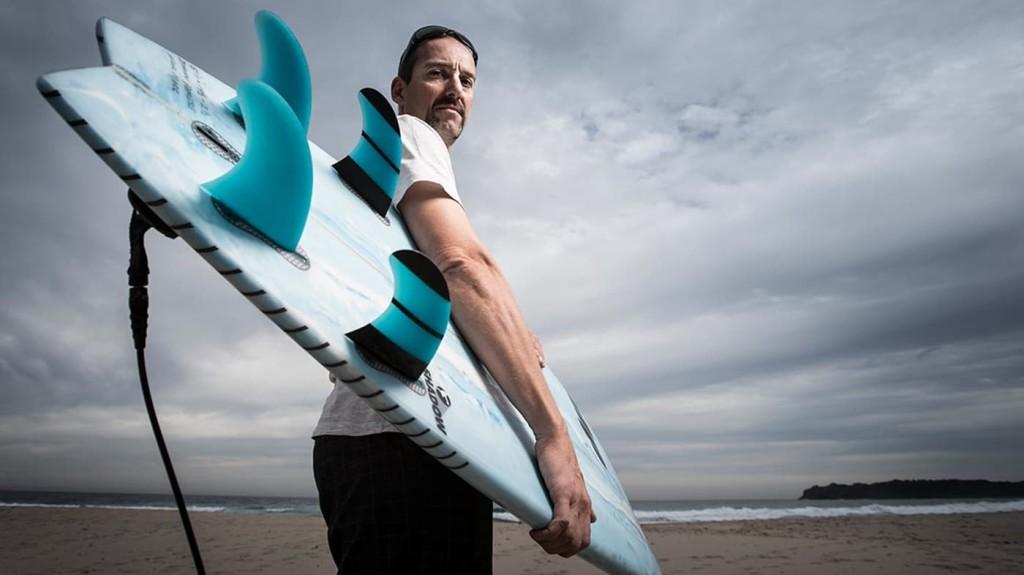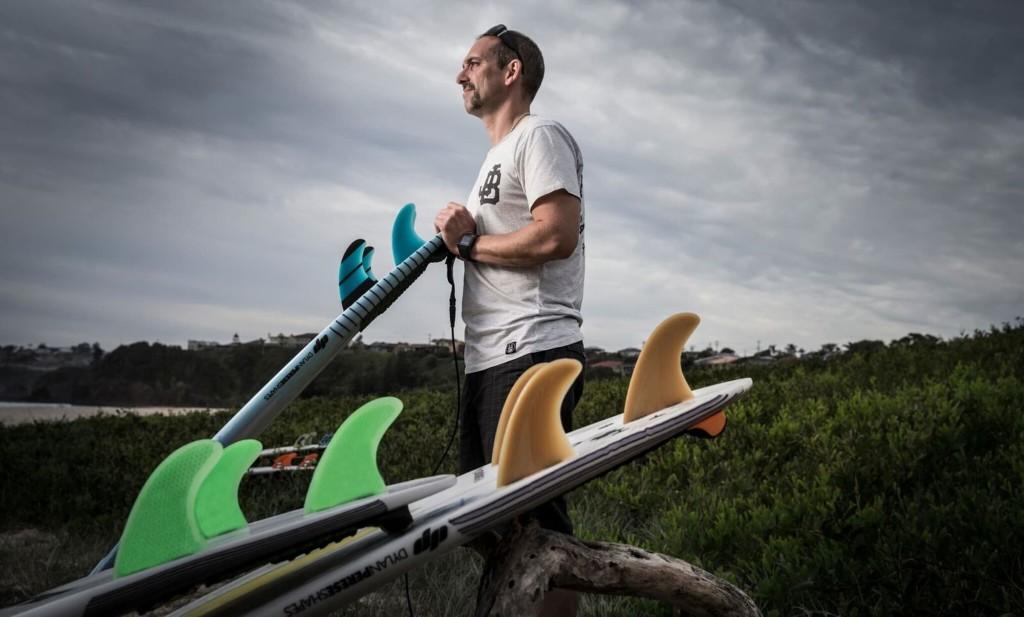Over the past few years, 3D printing technology has helped cultivate waves of innovation across a wide range of industries, whether it be on land, in outer space, or even upon the vast oceans of our Earth. As the tides continue to rise and fall, 3D printing seems to be trending upwards when it comes to the art of surfing, as surfboard manufacturers and enthusiasts have begun experimenting more and more with customized surfboards and fins. Last year, in New Zealand, we covered the story of the Jigsurf, a 48-piece surfboard made entirely from 3D printed components. Prior to that, we watched as fellow New Zealand surfer Roy Stuart gained notoriety from the surfing community for his unique 3D printed Warp Drive fins.
Now, for those who don’t have much experience riding upon the ocean waves, the fins of the surfboard might not seem to hold that much value, but those who are experienced surfers know that different fin designs can alter stability, control, and thus the overall performance of the surfboard. In New South Wales, Australia, researchers from the University of Wollongong have recently begun 3D printing surfboard fins that are tailored to serve the needs of the individual rider or the local surf forecast.
Led by Professor Marc in het Panhuis, the Associate Dean of UOW’s Faculty of Science, Medicine and Health, the research team has already 3D printed a number of surfboard fins, and are currently testing their functionality upon the waves. The surfboards used in the testing have been equipped with GPS tracking devices, which gathers data on the wave counts, top speed, turns, and air. This data is then compared to that of a professional surfer on the world circuit tour who has been riding with a similar tracking device, which will help the research team to validate and revamp the design of their 3D printed fins. In order to 3D print these customized fins, the research team utilized the 3D printers housed within the Australian National Fabrication Facility.
“We want to come up with new, more efficient fins that can be bespokely designed for a particular surfer and a particular wave,” said Dr. in het Panhuis. “Most current techniques involve moulds that are expensive to make and hence, are harder to customize based on individual surfer’s needs. In contrast, 3D printing is a process that allows for rapid prototyping and rapid optimization of designs for individual surfers.”
 Thus far, the University of Wollongong researchers have tracked more than 1,400 waves and 1,100 turns, which has enabled them to pinpoint which parts of the fin need improvement. Professor in het Panhuis and his team are already in talks with a handful of Australian surfboard manufacturers, and are looking to first introduce their 3D printed fins to the coastal city of Wollongong, and hopefully thereafter across the oceans of the world. Australia is already renowned for both their surfboard manufacturers and rideable waves, but with this 3D printing technique, they hope to improve the engagement and performance of the local surfing community.
Thus far, the University of Wollongong researchers have tracked more than 1,400 waves and 1,100 turns, which has enabled them to pinpoint which parts of the fin need improvement. Professor in het Panhuis and his team are already in talks with a handful of Australian surfboard manufacturers, and are looking to first introduce their 3D printed fins to the coastal city of Wollongong, and hopefully thereafter across the oceans of the world. Australia is already renowned for both their surfboard manufacturers and rideable waves, but with this 3D printing technique, they hope to improve the engagement and performance of the local surfing community.
The University of Wollongong has been a bastion for 3D printing technology research in Australia, in fact, back in 2014, Dr. in het Panhuis made ‘Jello’ waves with his research on developing edible hydrogels. At the end of last year, the institution provided a free, four-week online course in 3D bioprinting, which was open to everyone regardless of their experience level. With their 3D printed fins, Dr. in het Panhuis and his research team hope to improve the art of surfing for all levels of experience as well. By tailoring each fin for the needs of each individual surfer or surfboard, the University of Wollongong is looking to help these wave-riders conquer the ocean with their own style and preference. Discuss further in the 3D Printed Surfboard Fins forum over at 3DPB.com.
[ Source/Images: University of Wollongong ]
Subscribe to Our Email Newsletter
Stay up-to-date on all the latest news from the 3D printing industry and receive information and offers from third party vendors.
You May Also Like
Profiling a Construction 3D Printing Pioneer: US Army Corps of Engineers’ Megan Kreiger
The world of construction 3D printing is still so new that the true experts can probably be counted on two hands. Among them is Megan Kreiger, Portfolio Manager of Additive...
US Army Corps of Engineers Taps Lincoln Electric & Eaton for Largest 3D Printed US Civil Works Part
The Soo Locks sit on the US-Canadian border, enabling maritime travel between Lake Superior and Lake Huron, from which ships can reach the rest of the Great Lakes. Crafts carrying...
Construction 3D Printing CEO Reflects on Being Female in Construction
Natalie Wadley, CEO of ChangeMaker3D, could hear the words of her daughter sitting next to her resounding in her head. “Mum, MUM, you’ve won!” Wadley had just won the prestigious...
1Print to Commercialize 3D Printed Coastal Resilience Solutions
1Print, a company that specializes in deploying additive construction (AC) for infrastructure projects, has entered an agreement with the University of Miami (UM) to accelerate commercialization of the SEAHIVE shoreline...
































